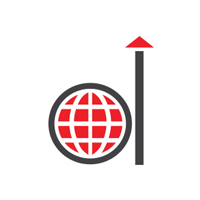Since 2006, Salesforce AppExchange has been the go-to platform for niche Salesforce solutions and tailored applications. For years, the platform has catered to thousands of businesses and active users to explore and deploy solutions to optimize their business processes. Currently, Salesforce AppExchange has over 7000 apps and certified Salesforce partners to implement these apps and help organizations make the most out of Customer 360’s expansive capabilities.
However, this raises several questions: How to navigate AppExchange? Which solution is best suited for your business? What are the key factors in assessing an app? To answer all these questions, it is important to understand the concept of Salesforce AppExchange.
Enter the World of Salesforce AppExchange
The Salesforce AppExchange is an important marketplace for Salesforce users worldwide. This platform hosts a diverse range of solutions and applications designed to enhance and extend the functionalities of Salesforce products. It provides businesses easy access to ready-to-use, industry-specific apps that can be seamlessly integrated with the existing Salesforce instance for improved operational efficiency.
Key offerings available on the AppExchange are:
- Tailored business apps
- Industry-agnostic solutions
- Components like Bolt Solutions and Lightning data
- End-to-end consulting services from Salesforce certified partners
AppExchange is not just a storehouse for different solutions, but it also promotes a community-powered ecosystem where users can share experiences, insights, and feedback. Through this highly collaborative community, businesses can seek critical information from other users and make the right decision regarding the right Salesforce tool for their requirements.
Diverse Range of Products on AppExchange
The Salesforce AppExchange has a wealth of applications, each designed to augment Salesforce users’ overall experience. From standalone applications to add-ons that improve the existing capabilities of Salesforce, the range is vast. Here’s a peek into different kinds of products that businesses can find on AppExchange:
- Industry-based solutions: Custom applications for key industries like healthcare, manufacturing, finance, etc.
- CRM extensions: Improve end-to-end customer relationship management with apps developed for different teams such as marketing, sales, and service.
- Data analytics and reporting: Tailored solutions that offer intuitive dashboards, reports, and analytics for in-depth insights.
- Productivity tools: Tools designed to enhance productivity across teams such as collaboration software and project management tools.
- Custom apps: Developed on the low-code Salesforce platform to meet unique business requirements.
Get expert guidance for your Salesforce needs—Partner with Damco today!
Step-by-Step Approach to Zero Down on the Best-Fitting Salesforce Solution
Step 1: Define and Establish Business Requirements
To find the most appropriate Salesforce solution, businesses must move strategically and start by defining and establishing business requirements.
Pin-point core processes and associated requirements: Before stepping into the AppExchange ecosystem, it is vital to identify the core business operations. As an initial step, it ensures that the selection of the platform or app remains in sync with the unique business needs.
- Begin by listing the main operations of the business processes. This may include data analytics, inventory management, customer relationship management, or human resource management.
- Prioritize these operations based on their importance in achieving the business goals. This step helps in narrowing down the product search that fits the priority list.
- Connect with all stakeholders within the organization to ensure that all aspects are covered. This collaborative step helps unveil insights into requirements that may look too trivial but are significant in the long term.
Align Salesforce products with business operations: While choosing a Salesforce product from AppExchange, it is important to ensure that it aligns with the existing business operations. This equates to the seamless integration of the chosen product with the Salesforce instance that users are accustomed to, improving efficiency without any disruption. Go for products that come with configuration flexibility to match the unique operational needs. The following steps should be undertaken to align Salesforce products with business processes:
- Chalk out the existing operations in detail.
- Pin-point challenges the new solution can address.
- Assess if the product can be tailored to bridge gaps without any overhaul.
Pro Tip: Always remember that a product requiring extensive changes to meet the business requirements might result in longer deployment time and affect productivity.
Step 2: Evaluate AppExchange Products
Go Through Ratings and Reviews: The user ratings and reviews provide invaluable insights about products, their performance, and user experiences. While assessing these products for their suitability, this can act as the preliminary filter to check the general opinion about a tool before going into deeper research. While reading the reviews, certain patterns can help, including:
- Repeated issues and complaints
- Frequent praise on specific functionalities
- Responses and updated information from vendors
Pro Tip: Rather than focusing on ratings, read what a user has written in the review as it can help to understand the perspective behind ratings.
The volume of reviews also matters. For instance, a tool with almost a thousand reviews and an average of four-star ratings might be better than another one with only a handful of five-star reviews. While deciding on the product, keep this perspective in mind.
Analyze product trials and demos: Checking a Salesforce product firsthand through trials and demos is a critical part of the selection process. These demos help to gauge the product’s usability and functionality in the real world. During the demos, focus on its intuitiveness, ease of navigation, complexity level, and simplicity of user interface.
- Trials: A hands-on experience for utilizing the tool within the business environment
- Demo: A guided experience showing the best-case utilization of the product
Pro Tip: Note down any issues or limitations experienced during the trial as these can be the real deal-maker or breaker.
Assess the product performance against the unique business requirements and if the product can handle the data volume while seamlessly integrating with the existing systems. Utilize the trial time to test:
- Customization options
- Data export/import capabilities
- Ease of integration
- System performance under load
Step 3: Understand Security and Compliance in Terms of Salesforce AppExchange
Security and AppExchange: Salesforce AppExchange has security as its priority; that’s why the listed products undergo a diligent security review process before it is available to users. The key security criteria involve:
- Data encryption: Data protection during transit and at rest.
- User authentication: Controlled and authenticated access to the application.
- Vulnerability management: Mitigation of potential security breaches through regular scans and preventive measures.
Compliance with industry regulations: While selecting a product, ensuring its adherence to the latest industry regulations relevant to the business is a must. Compliance isn’t just any other to-do list; it is about safeguarding customers’ trust and the business’ integrity.
- Go for tools and products with compliance certifications and compliance badges, indicating that they meet the industry standards.
- Be aware of the industry-specific regulations, such as GDPR for businesses in the EU and HIPAA for healthcare. Ensure the product supports these regulations.
Step 4: Assess Vendor’s Reliability and Support
Research about the vendor: While selecting a solution from Salesforce partner companies through AppExchange, the importance of the partner’s reputation can’t be sidelined. A Salesforce partner/vendor with an impressive track record probably provides a robust product and great customer service. Check their presence and activeness in the Salesforce community. Their engagement, participation in forums, and blog contributions can vouch for their knowledge and commitment.
- Check for case studies and client testimonials to get insights into the real-world usage of the vendor’s solution.
- Try to find out if the vendor has been awarded any recognition or accolades as these are clear indicators of innovation and quality products.
Pro Tip: Go beyond the basic metrics. A greater number of downloads doesn’t translate to a higher quality product in each scenario. Consider every aspect and try to find patterns in the feedback.
Check maintenance and support policies: While making the final decision to get a product, it is important to get a detailed idea of the maintenance and support provided by the vendor. A responsive, robust, and flexible support makes the difference between a disruptive operation and a smooth one. Go with the vendor that offers clear maintenance and support policies, including support availability, types of support, and response times. While reviewing these policies, check if they entail:
- Access to an account manager
- 24X7 support
- Clear response time for issues with different severity levels
- SoPs for maintenance
- Frequency of upgrades
- Performance records and historical uptime
Pro Tip: Ask the vendor for a Service Level Agreement (SLA), detailing various support and maintenance terms and policies, issue resolution, and service continuity.
Step 5: Make the Final Decision
Shortlist and compare: Once various Salesforce products are thoroughly researched and assessed based on requirement criteria, the last phase starts with shortlisting the best-suited products. These shortlisted products are further compared against each other in different aspects. Usually, these aspects impact business operations the most, such as ease of utilization, functionality, and scalability. Other aspects that can be considered are:
- User interface
- Functionality set
- Ease of integration
- Customization
- Support and maintenance
- Pricing
Note that while making the final call, the pros and cons of the product along with future enhancements and updates should be given equal weightage as they have a long-term impact on the business.
Final Thought
To conclude, opting for the best Salesforce solution from AppExchange can massively impact end-users’ Salesforce experience. By carefully assessing business requirements, evaluating reviews, considering the compatibility and offered support, businesses can make a highly informed decision. Remember, the right platform or Salesforce application, along with dedicated support from top Salesforce partners can streamline processes, empower teams, and drive success.
Choosing a Top Salesforce Partner: A Guide for Businesses Growth






